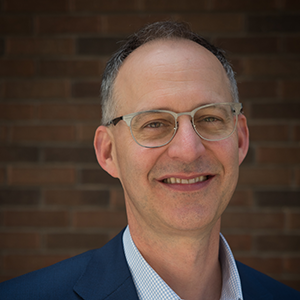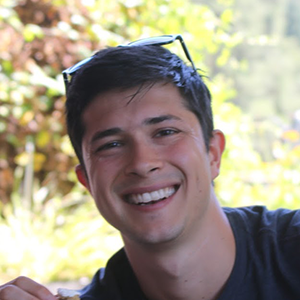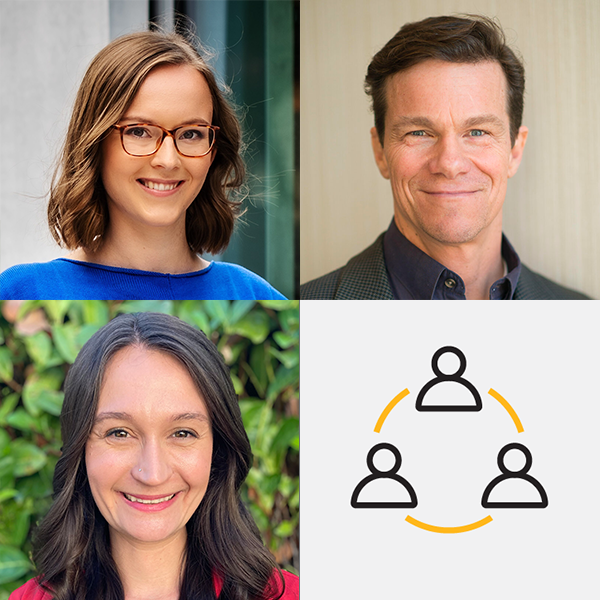What are you and your company doing to help reduce embodied carbon emissions?
Shubhada Gadkar
PhD, LEED AP, Concrete/ Environmental Engineer, National Ready Mixed Concrete Co.
I was first introduced to the sustainability of cement and concrete materials during my PhD course work and research at Clemson University. While working on my PhD thesis topic on freeze thaw durability of crumb rubber concrete, I learned about the environmental issues related to disposing of used car tires and other waste materials into the landfills and also the efforts from the construction industry to find innovative ways to reuse and recycle this waste into concrete. I also learned about LEED rating system and green building materials but wasn’t sure how this knowledge can be applied to my career in real life. However, sustainability and green concrete immediately became relevant when I started working for National Ready Mixed Concrete Co. in Los Angeles (LA) in 2017. With my role as a Concrete/ Environmental Engineer at National, I’m involved in research and development, exploring new materials and optimizing material ingredients in concrete and assist with LEED and green building projects.
Initially, my responsibilities on the environmental side were limited to providing LEED information and related assistance to our Sales team for many of National’s projects. However, in less than a year, the awareness about reducing embodied carbon emissions in cement and concrete production became apparent. This was in addition to LEED V4’s EPD requirement for material transparency. Hence, National decided to take a step forward and collaborate with Climate Earth for generating product specific Environmental Product Declarations (EPD’s) for all of its concrete mixes and this project rapidly became my primary focus. With many other logistical challenges in the LA market for ready mix concrete business, this was quite a broad sustainability commitment which was fully supported by our parent company in France, the Vicat Group. It also became an inevitable goal for the company due to launching of National’s flagship Vernon plant in downtown LA towards the end of 2018. Vernon is a mega batch plant with ability to store and deliver concrete with multiple aggregates, cement and SCM’s and it was custom‐built for high concrete production rates with other sustainability features. Around the same time, imported premium aggregates and slag were easily available in the LA market. Putting all these available resources together, National’s QC team was ready to serve upcoming demand for high performance concrete which also were supportive of performance based specification needs in downtown market.
National’s collaboration with Climate Earth resulted in launching state‐of‐the‐art digital technology CarbonClarityTM Suite to provide Instant‐on‐demand and 3rd party verified concrete EPD’s in the fall of 2019. With this, National Ready Mix became the first ready mix producer in the greater Los Angeles area to provide EPD’s on all its concrete mixes. The new tools from this suite gave National’s QC team including myself the ability to provide immediate, precise and 3rd party verified environmental impacts in addition to the standard performance metrics at any given time in the project’s life cycle for the most complex projects. Also, instant‐on‐demand, digitally verified EPD’s made it possible to generate product specific EPD’s for all our concrete mixes produced at 11 ready mix plants eliminating long waiting times for generating and verifying paper based EPD’s. With this shift to digital data, National’s team now can effectively collaborate with the architects and structural designers early on during planning and designing stages of the project and assist them in reducing embodied carbon emissions of ready mix concrete materials, in addition to fulfilling other building code and specification requirements, e.g. concrete strength, durability and constructability. This EPD tool also allows me to discuss LEED project team’s EPD and low carbon concrete goals in advance. As a material supplier sponsor of Carbon Leadership Forum (CLF), our EPD’s are also populated in EC3 tool. I like the ability of this powerful tool to digitally and statistically compare environmental impacts of all our concrete mixes and discuss them with our customers. This also allows us to explore more innovative ways to reduce the embodied carbon emissions of concrete production and optimize mix and environmental performance when the need for performance based and reduced carbon mixes are desired.
As a researcher, demand for low carbon concrete mixes provides me newer opportunities to perform research and testing on various new aggregates, blended cements, SCM’s, admixtures and additives for use in concrete and assess their environmental impacts. I’ve greatly enjoyed being a part of every step of creating this digital EPD tool and witness great enthusiasm from the architect & design community in LA including government organizations such as the City of LA and Caltrans since its launching. Involvement with CLF forum and networking with its members has been a great experience to me as well.
Currently, I’m a Co‐Chair of Construction Committee for USGBC‐LA chapter and the main focus of this group is to reduce construction waste and develop efficient system to recycle and reuse.

Shubhada Gadkar
Jeff Thiel
Business and investment analyst, software entrepreneur, climate activist
I was winding down my third software startup when a friend invited me to join a fellowship program that aims to develop leaders in environmental philanthropy. I’ve donated for many years to conservation organizations, and the timing was right, so I joined a small class to learn how to be strategic in my giving and boost my impact. I used the time to do a deep dive into the science behind global warming. What I learned alarmed me! I had wildly underestimated both the urgency and severity of the problem. If I wanted to ensure a livable world for my children, I decided I had to focus all my resources on figuring out how to stop global warming. But where to start?
Fortunately, I met a couple of great people who had come to the same conclusion, and we decided to explore possible responses together in an informal collaboration we call Carbon Innovations. We investigated whether it’s possible to take CO2 out of the air, convert it into feedstocks, and use them to create valuable products. We concluded that it would be – when we have a price of at least $100 per metric ton on emissions. We also concluded that in the near term we need to focus attention on the large and growing problem of Embodied Carbon emissions in buildings, and connected with the Carbon Leadership Forum to see how we could help them scale their work. Among other projects, we organized the Carbon Smart Building Day event at the Global Climate Action summit in September 2018 which was instrumental in making Embodied Carbon a shared priority for the building industry alongside reducing operational emissions. Most recently I organized the Decarbonizing Buildings track for the Seattle GoGreen 2020 conference to build momentum for the CLF’s work.
At Carbon Innovations we share a group focus on scalable market solutions to the global warming crisis, though we purse different projects as individuals. I’ve spent the most time investing in new companies with promising decarbonization solutions. We’re going to need a lot of innovation to avoid climate catastrophe! The innovations I’ve seen so far convince me that we have most of the solutions we need right now, and there are many more in the pipeline. I’ve also been advocating for a federal Carbon Fee and Dividend policy as the liaison for the Citizen’s Climate Lobby to the WA 8th Congressional District Representative, presently Dr. Kim Schrier. We’ve lined up >80 sponsors in the US House of Representatives for the Energy Innovation and Carbon Dividend Act (HR 763), which would place significant and rising fees on US carbon emissions, return all the fees to households on a pro-rata basis, and level the playing field for businesses who compete overseas by adjusting the fees at the border. My training as an economist tells me that we must harness the power of price signals to get all households and businesses to factor the true cost of carbon pollution into every purchase decision. With this policy, vulnerable households will get more back in dividends than they’ll pay in higher prices. We project that we can cut our annual emissions 40% in 10 years with this single powerful measure.

Jeff Thiel
Caitlin Hart
Senior Program Manager, Boston Society for Architecture (BSA)
My entry into the world of embodied carbon was probably different from many others in the CLF community. As a program manager for the Boston Society for Architecture (BSA), my introduction was not through research or a design project, but rather through the imperative to plan a conference around a pressing architectural issue. Our 2019 BSA President Jean Carroon FAIA, a principal at Goody Clancy, wisely identified embodied carbon as that issue, and so began my embodied carbon education.
Unsurprisingly, the conference had a great energy, with smart, motivating speakers (including CLF’s own Kate Simonen and Stephanie Carlisle, as well as BuildingTransparency’s Stacy Smedley) and equally engaged attendees. From that crowd, CLF Boston was born. The Hub–about a year and a half old–has a really committed core group and several smaller working groups that are actively creating resources, designing educational programs, and advocating for low-embodied carbon buildings in Greater Boston and across disciplines. This past summer, the Education working group created the super successful Embodied Carbon 101 (EC101) series, which was picked up by AIAU, a national education platform for architects and designers. And they’re back at work creating their next series, which will focus on the practical application of concepts and tools introduced in EC101 (stay tuned!).
The CLF community is perhaps the most enthusiastic, generous, and committed group of volunteers that I’ve worked with–and that extends far beyond Boston. As a Regional Hub Director alongside Anthony Pak and Martin Torres, I’m delighted to convene and connect with Hub Leaders across the world, building another layer of community within the larger Carbon Leadership Forum. It’s been a privilege to contribute my time and whatever program management experience I have to support others as they work hard to reduce embodied carbon.
As a non-practitioner, I always struggled to latch onto the operational side of sustainable design, but with a background in historic preservation, I find embodied carbon so much more tangible, and a really exciting way to further climate action through existing buildings. New construction can only get us so far, and I look forward to highlighting, whenever possible, our already-built environment as the most meaningful frontier for climate action–through my work at the BSA, with the CLF Boston Reuse working group, and wherever else I can get involved.

Caitlin Hart
Martin Torres
Temporary Graduate Engineer, Austin Energy Green Building; Part-time Structural Engineer (Sustainability Initiative), LeMessurier; Prospective PhD student, TBD!
Three years ago I was finishing my MS in structural engineering at UC Berkeley and had never heard of embodied carbon. I was looking for opportunities to contribute to sustainability in the building industry but was growing accustomed to the same frustrating response that structural engineers don’t have much to do with sustainability. That was until I started my career at Walter P Moore under the tutelage of Dirk Kestner. Alongside my structural engineering work, I learned about embodied carbon, conducted whole-building life-cycle assessments, worked with tools like EC3, Tally, and Athena IEB, and was plugged into the global sustainability community, particularly through the CLF.
I had and still have a lot to learn, but I was eager to do more sustainability work so I jumped at every opportunity I could within the CLF. Alongside Fred Bernstein as my editor, I serve as content lead of ‘News You Can Use’ that lives on CLF’s Discourse page. I also founded the second local CLF hub here in Austin, TX, following the footsteps of Anthony Pak in Vancouver (now there are 26+ hubs!). As more hubs kept popping up, Anthony, Caitlin Hart, and I were selected to facilitate and oversee the creation and growth of hubs, so now I am one of three regional co-directors of CLF hubs. Outside the CLF, I work on program mechanics of the SE 2050 Commitment. Somewhere in there I find time to run, ride my bicycle, make music, hike, bake bread, and read.
These days I am working from home with Austin Energy Green Building as a temporary graduate engineer focused on several initiatives. AEGB is working towards making Austin net-zero carbon, so my role encompasses adding to our local green building rating system, working with the City of Austin on the implementation of our Climate Equity Plan, introducing and collecting policy ideas, developing an LCA workshop to accelerate the practice locally, and facilitating the creation of more environmental product declarations (EPDs) in Texas. I am also working part-time with LeMessurier as a structural engineer and sustainability consultant, running parametric studies, doing framing optimization analysis, conducting LCAs and embodied carbon assessments, and developing templates and tools to build the sustainability practice. This Fall I will be starting a PhD where my research will focus on characterizing uncertainty and error propagation in EPD data collection and WBLCA to inform embodied carbon reduction strategies and sensitivity analysis.

Martin Torres







